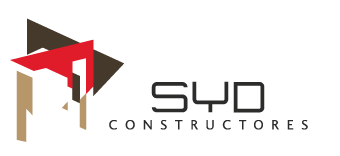Even though there are challenges like subjectivity in estimation and variable receivables, these problems can be reduced with frequent reviews and modifications. Use the percentage of bad debts you had in the previous accounting period and apply it to your estimate. For example, if 2% of your sales were uncollectible, you could set aside 2% of your sales in your ADA account.
How to Calculate the Percentage of Bad Debt
Once the estimate is determined, an adjusting journal entry is made to debit bad debt expense and credit the allowance for doubtful accounts. This allowance can accumulate across accounting periods and may be adjusted based on the balance in the allowance method definition the account. By following these steps, businesses using the Allowance Method can systematically estimate and account for potential bad debts. This helps maintain the accuracy of financial statements and ensures that provisions are in place to mitigate the impact of uncollectible accounts. Bad debt expense, which reflects the estimated uncollectible accounts during the period, is included as an operating expense.
This method violates the GAAP matching principle of revenues and expenses recorded in the same period. The provision for doubtful debts is the estimated amount of bad debt that will arise from accounts receivable that have been issued but not yet collected. Thus, the net impact of the provision for doubtful debts is to accelerate the recognition of bad debts into earlier reporting periods.
Find out how to help your clients manage their receivables more effectively
Businesses depend on smooth logistics to get the materials they need on time and at the right price. Raw materials are the building blocks of all products—they either come from nature or are made by humans. Every industry relies on them, and knowing what they are can help businesses cut costs, boost quality, and stay eco-friendly. Businesses benefit greatly from the allowance technique regarding financial forecasting, accuracy, and compliance. However, it’s also critical to consider the potential difficulties and restrictions of applying this strategy.
- Factors such as economic conditions, customer payment trends, and other relevant factors are also considered in this estimation process.
- Overall, the purpose of the Allowance Method is to provide businesses with a systematic approach to estimating and accounting for potential bad debts.
- Management uses the allowance for doubtful accounts method to estimate credit accounts that customers will not pay.
- Bad debt is the specific amount of accounts receivable that has been determined to be uncollectible and is written off.
When an account is written off, Allowance for Doubtful Accounts is debited, and Accounts Receivable is credited, without affecting Bad Debt Expense, as it was already recognized. It’s equally important to note that only a direct method of write-off is acceptable under the income tax reporting statute of the United States. It’s important to note that both methods aim to eliminate uncollectible debtors and present a true and fair view of the business. Additionally, a 5 percent waste allowance is added to account for cutting and defects.
Steps to Dispute Collections and Remove from Credit Report
Later in the year, the customer unexpectedly pays the previously deemed uncollectible account in full. If the recovery was greater than the amount previously written off, an adjustment to the allowance for bad debts would be made. When a sale is made, the transaction is initially recorded as revenue and a corresponding increase in accounts receivable.
The Allowance Method, also known as the Allowance for Doubtful Accounts Method or Provision for Bad Debts Method, is an accounting approach used to estimate and account for potential bad debts. It allows businesses to anticipate and prepare for uncollectible accounts before they become a financial burden. The amount you wrote off in past months for doubtful accounts is probably a good predictor of what you might write off in the future. The provision for bad debts could refer to the balance sheet account also known as the Allowance for Bad Debts, Allowance for Doubtful Accounts, or Allowance for Uncollectible Accounts.
This approach is more accurate for companies with irregular payment cycles or varying sales. For example, if a company has $1 million in sales and estimates that 2% of sales will be uncollectible, the bad debt expense would be $20,000. This method is often used when a company has stable sales patterns and a predictable rate of uncollectible accounts. Based on this estimation, ABC Company creates an allowance for bad debts of $5,000 (5% of $100,000). This allowance is recorded as a contra-asset account on the balance sheet, reducing the reported value of accounts receivable to $95,000. The reliability of the allowance method hinges on the accuracy of the estimates made for uncollectible accounts.
Inventory Accounting Essentials: Managing and Recording Inventory Transactions
The concepts of allowance for doubtful accounts and bad debt expenses play a pivotal role in portraying an accurate picture of a company’s financial health. It plays a crucial role in prudent financial planning, guiding credit policies, aiding in decision-making, and ensuring the company’s financial stability. So, how can businesses facing such challenges maintain accuracy in their bad debt estimates? Organizations make the following journal entry when they initially estimate bad debts to account for the estimated quantity of uncollectible receivables.
- The first journal entries under the allowance method include a debit to bad debt expense and a credit to allowance for doubtful accounts.
- Then, upon receipt of payment, the company will record the cash receipt by debiting cash and crediting accounts receivable.
- At the end of the year, they analyze their accounts receivable and estimate that 5% of the outstanding balances will be uncollectible.
- However, not all debts are collectible; some customers may default on their payments.
- This estimation forms a contra-asset account on the balance sheet known as the allowance for doubtful accounts.
The first journal entries under the allowance method include a debit to bad debt expense and a credit to allowance for doubtful accounts. When the company considers an account to be completely uncollectible, it makes a debit to allowance for doubtful accounts and a credit to accounts receivable. Despite these limitations, the Allowance Method remains a widely used and effective approach for managing bad debts. Implementing this method requires careful analysis and monitoring of account receivables, historical data, industry trends, and economic conditions.
When an account is written off using the allowance method, accounts receivable a.is unchanged and the allowance account increases. This scenario illustrates how XYZ Corp. utilizes the allowance method to manage its accounts receivable, making adjustments based on changing assessments of credit risk. This entry increases the cash balance by $2,000 and replenishes the allowance for doubtful accounts by the same amount, reflecting the recovery of the previously written-off debt.
However, as time goes by and if payment is not received, the company may determine that the amount is uncollectible. Instead of directly reducing the accounts receivable at that point, the company records an expense called bad debts expense and reduces the allowance for bad debts by the same amount. The allowance method involves creating an estimate for the amount of receivables that may not be collected. This estimation forms a contra-asset account on the balance sheet known as the allowance for doubtful accounts. The primary objective is to conform to the matching principle of accounting, ensuring that expenses are recorded in the same period as the related revenues.
Because the allowance for doubtful accounts is established in the same accounting period as the original sale, an entity does not know for certain which exact receivables will be paid and which will default. The Allowance Method is a valuable accounting technique that allows businesses to anticipate and account for potential bad debts. By estimating and creating a provision for uncollectible accounts, companies can accurately report their financial statements and make informed decisions regarding credit policies and collections. This method ensures compliance with accounting standards and provides transparency in financial reporting. If the following accounting period results in net sales of $80,000, an additional $2,400 is reported in the allowance for doubtful accounts, and $2,400 is recorded in the second period in bad debt expense.
The amount for the allowance is calculated as a percentage of the sales or debtor balance. In the Sales method, a certain percentage is applied to the sales amount to create a reserve. The allowance method is used in accounting to create contra for the debtors that are expected to be uncollectible. The quality of raw materials determines the durability and performance of the final product.
In the direct write off method, a small business owner can debit the Bad Debts Expense account and credit Accounts Receivable. The direct write off method is a way businesses account for debt can’t be collected from clients, where the Bad Debts Expense account is debited and Accounts Receivable is credited. For this reason, bad debt expense is calculated using the allowance method, which provides an estimated dollar amount of uncollectible accounts in the same period in which the revenue is earned. When the firm makes the bad debts adjusting entry, it does not know which specific accounts will become uncollectible.

